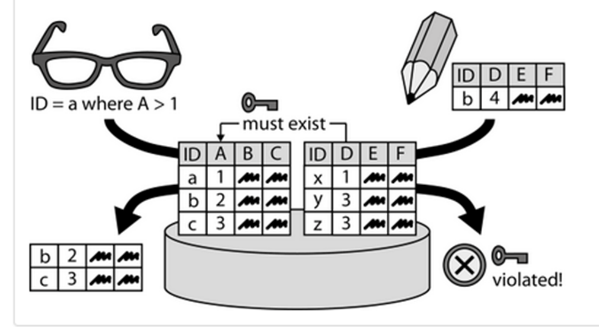Database
Database PaaS services typically align as either a SQL/relational form or NoSQL/non-relational type.

SQL/relational databases handled data comprising large numbers of similar data elements. These elements have identifiable dependencies among each other. When this structured data is queried, users make certain assumptions about the data structure and the relationship consistency between the retrieved data elements.
Data elements are recorded in tables, where each column represents a data element attribute. Table columns may also embed dependencies for how entries in one table column relate to a corresponding column in a different table. These dependencies are strictly enforced during any data manipulation.
In No-SQL/non-relational databases (Mongo, Map Reduce, and so on), an enforced database structure does not exist. This is useful when processing large data sets and the process is split up and mapped to multiple application components. This is often the case with cloud applications...



































































